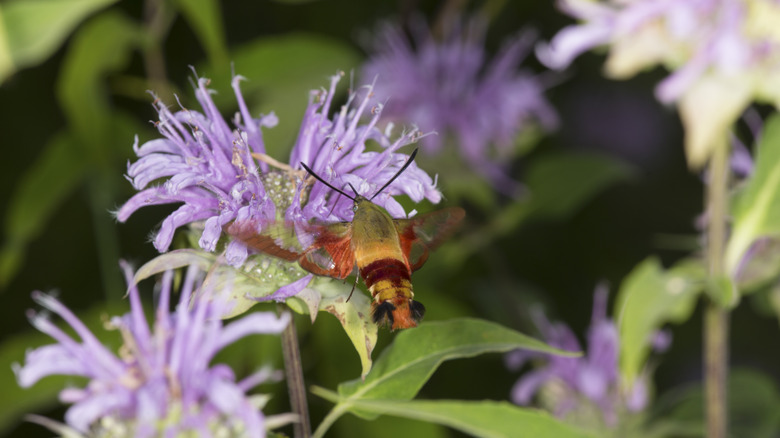This Purple-Pink Wildflower Is A Hummingbird And Pollinator Magnet
Whether you're dreaming of your Disney princess moment with the hummingbirds or just enjoy the concept of fresh food, planting native flowers in your yard is a great idea. Not only do they need less water once established, but they also attract pollinators that supply the world with produce. Monarda fistulosa, also called wild bergamot, is a tall, pastel-colored perennial flower that bees, hummingbirds, and butterflies love. It's also one of the best native plants to grow if you live in the Midwest!
Their lavender color isn't as flashy as their fellow-native relative, scarlet beebalm (Monarda didyma), but they can blend easily into a softer landscape, even while standing at four feet tall. The slender tubular flowers are arranged like a pincushion and invite pollinators with a proboscis or long beak to find nectar. Swallowtail butterflies and hummingbird moths especially love them. The latter is an adorable pollinator that looks and sounds like a tiny hummingbird as it visits flowers all over North America. If a creature called a "snowberry clearwing" visiting your yard isn't enough of a reason to learn how to start a pollinator garden, then what is?
How to plant wild bergamot
Once you've decided to bring more pollinators into your yard and garden, planting wild bergamot is pretty simple. There are places that sell seeds, bareroot, or potted plants, which will determine how you get it in the ground. Whether you direct seed or transplant, picking the right spot is the most important part. Wild bergamot can handle a little shade but it does prefer to reach for the sky in a sunny space.
As a prairie plant, its native tendencies lean towards full sun and soil that doesn't stay too wet. Prairies may bring to mind fields of tall grasses, but many native pollinator attractors grow there, as well. Prairies are known to have lots of organic matter without staying as wet as forest soils. So when it comes to amending the soil for your wild bergamot, it is best to keep it loose and well-draining, rather than piling on heavy compost and peat moss mixtures. Then, when it's time to water, keep in mind that these plants are drought tolerant once established, so they prefer a deep water less often.

